
Reforestación en Los Portales – Reforestation at Los Portales
En la región alrededor de Los Portales y también dentro de la propiedad, la «Dehesa» es el paisaje típico del sur de Andalucía, mezclado con zonas cultivadas y silvestres. Se compone principalmente de encinas, que se adaptan bien al clima cálido y seco. Sin embargo, predominan los monocultivos y las superficies arboladas son muy reducidas y con tendencia a reducirse.
Los árboles no son sólo un aspecto decorativo en el paisaje, sino que realizan muchas más tareas para la humanidad, desde la conservación del agua hasta funciones económicas, pasando por factores recreativos y, lo que es más importante, desempeñan un papel importante en un ecosistema.
Desde el principio Los Portales se ha centrado en la regeneración del ecosistema, y la reforestación ha desempeñado un papel importante. El primer proyecto de reforestación en Los Portales ha sido una plantación de encinas subvencionada. Se plantó hace unos 30 años y hoy los árboles tienen un tamaño medio de 5-10 m.
Las difíciles condiciones climáticas, con veranos muy calurosos y un periodo seco sin lluvia alguna de mayo a septiembre/octubre (precipitaciones medias de 422 mm/año), son todo un reto.
Por eso trabajamos en la regeneración de ecosistemas combinando distintos métodos, como la reforestación, los paisajes de retención de agua y el manejo holístico para restaurar y reforzar los efectos positivos de un ecosistema sano y crear las condiciones adecuadas que favorezcan el crecimiento de los árboles y el rejuvenecimiento natural de las especies arbóreas locales.
Estos efectos positivos de un ecosistema sano incluyen:
- Reducción de la erosión del suelo mediante la protección contra el viento y la fijación del suelo a través de las raíces que regeneran y preservan la fertilidad del suelo
- mejora del efecto capilar/capacidad del suelo para absorber el agua de lluvia
- aumento del nivel de las aguas subterráneas
- restauración de la biodiversidad ralentizando la desertificación
- prevención de inundaciones
- recuperación de la madera.
Un bosque del futuro es un bosque mixto climáticamente estable, compuesto por árboles -en su mayoría autóctonos- que pueden soportar mejor las condiciones cambiantes de la región. En Los Portales seleccionamos los árboles adecuados para las condiciones climáticas y para su finalidad futura (suministro de alimentos, suministro de sombra, mejora de la biodiversidad, retención de agua, forraje para animales, elemento decorativo, etc.).
Las principales variedades de árboles que plantamos son:
encina (Quercus ilex), acebuche (Olea europaea), alcornoque (Quercus suber), madroño (Arbutus unedo), peral silvestre (Pyrus communis), laurel silvestre (Viburnum tinus), lentisco (Pistacia lentiscus), espino blanco (Crataegus monogyna), retama (Retama), quejigo (Quercus lusitanica), higuera (Ficus carica), almez (Celtis australis), pino (Pinus halepensis), casuarina (Casuarina equisetifolia), aligustre (Phillyrea angustifolia) y otros.
Aplicamos técnicas de plantación adecuadas que nos han dado buenos resultados, como un tamaño de los hoyos de plantación de al menos 1x1m. A cada hoyo de plantación añadimos un sustrato de Terra Preta; creamos un anillo de riego y cubrimos la corona con material de acolchado. Ocasionalmente hemos añadido microorganismos eficaces en el primer riego. Cada árbol se planta con la conciencia de que muy probablemente nos sobrevivirá y de que estamos contribuyendo al bienestar de las generaciones futuras.
Las zonas de reforestación también se seleccionan teniendo en cuenta una buena combinación de todas las diferentes técnicas de regeneración del ecosistema, mencionadas anteriormente.
Deja que la naturaleza sea tu maestra:
- plantar árboles a lo largo de los canales de retención de agua, a lo largo de los barrancos o arroyos existentes donde ya se esté produciendo la regeneración natural y se encuentren mejores condiciones de suelo
- seguir las curvas de nivel del paisaje, plantando en las marcas de orientación de la línea clave para asegurar el mejor suministro de agua
- combinar la reforestación con una gestión holística para mejorar la fertilidad del suelo y crear sistemas agroforestales
- crear microclimas para favorecer la regeneración natural
- crear bosques mediterráneos mixtos en los que las distintas especies se protejan y apoyen mutuamente (buena asociación de distintas especies arbóreas) combinando especies de crecimiento lento y rápido para crear distintos estratos forestales (estrato emergente, estrato de copas, estrato del sotobosque y suelo forestal)
- añadir árboles a las «islas» ya existentes para aumentar su superficie y crear corredores de conexión entre estas zonas
- un árbol que crece a partir de una semilla en el lugar asignado suele tener más posibilidades de sobrevivir que un árbol plantado. Por lo tanto, alternamos entre zonas de siembra y plantación
- mantenimiento: poda, sustitución de árboles muertos, protección de los ejemplares contra el ramoneo del ganado y la caza, riego los dos primeros años (después los árboles tienen que arreglárselas solos)
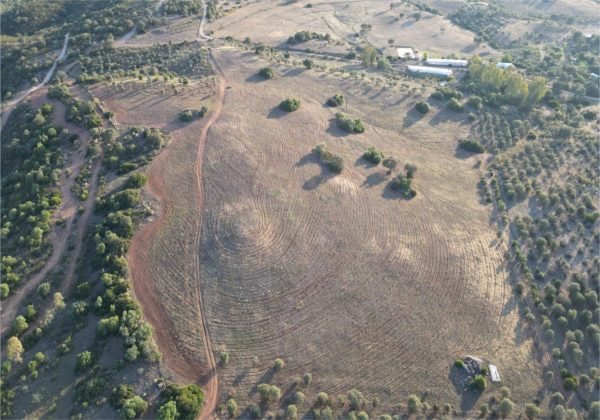

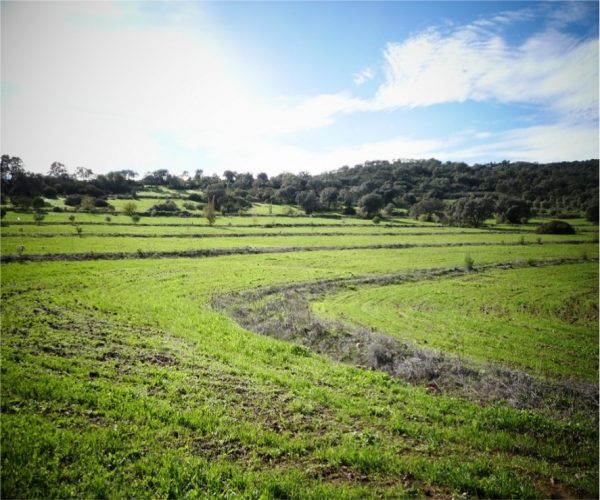
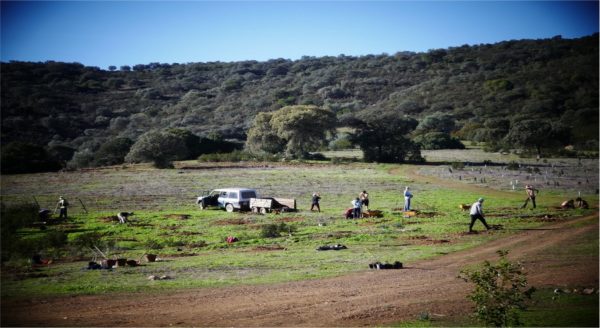
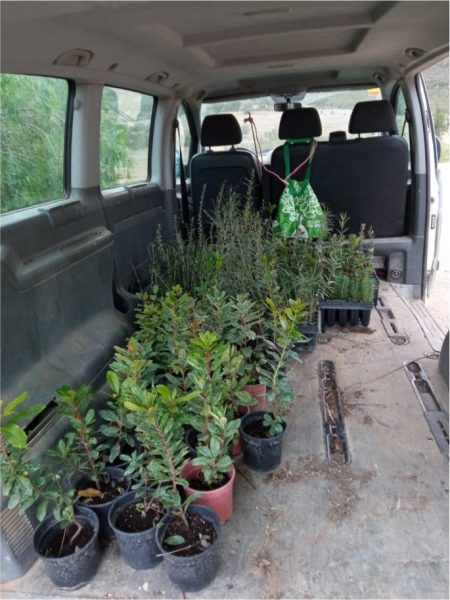
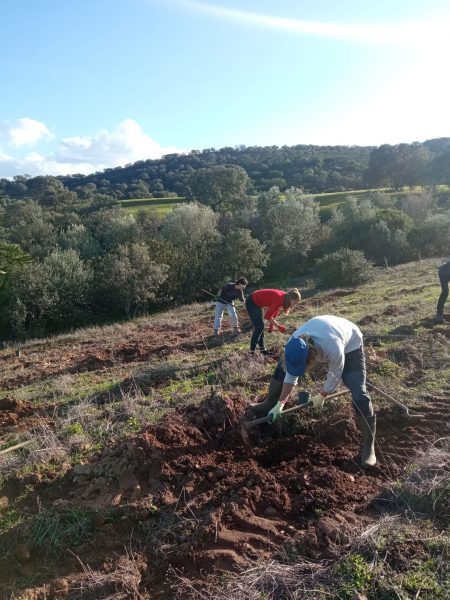
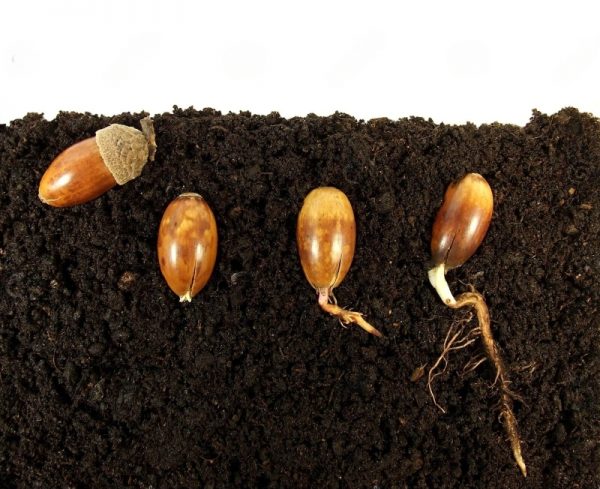
In the region around Los Portales and also within the property, the “Dehesa” is the typical landscape of Southern Andalusia, mixed with cultivated and wild areas. It consists mainly of holm oaks, which are well adapted to the warm and dry climate. However, it is predominantly monocultures and the areas with trees are very small and the tendency is for them to shrink.
Trees are not only a decorative aspect in the landscape, they perform many more tasks for mankind, from water conservation to economic functions to recreational factors and most importantly they play an important role in an ecosystem.
Since the beginning Los Portales had a focus on regenerating the ecosystem, and reforestation has played an important role. The first reforestation project in Los Portales has been a subsidised funded holm oak plantation. It was planted about 30 years ago and today the trees have an average size of 5-10m.
The difficult climatic conditions with very hot summers and a dry period with no rain at all from May to September/October (average precipitation 422mm/yr), are very challenging.
This is why we work on the regeneration of ecosystems by combining different methods, including reforestation, water retention landscapes and holistic management to restore and reinforce the positive effects of a healthy ecosystem and to create appropriate conditions that support tree growth and natural rejuvenation of local tree species.
These positive effects of a healthy ecosystem include:
- Reducing soil erosion by wind protection and soil fixation through roots
- regenerating and preserving soil fertility
- Improvement of capillary effect/ability of the soil to absorb rainwater
- an increase in groundwater level
- restoration of biodiversity slowing desertification
- lood prevention
- timber recovery.
A forest of the future is a climatically stable mixed forest, composed of trees – mostly indigenous – that can better withstand the changing conditions of the region. At Los Portales we select the appropriate trees for the climatic conditions and for its future purpose (food supply, shade supply, enhancing biodiversity, water retention, animal fodder, decorative element, etc.).
The main tree species that we plant are:
holm oak (Quercus ilex), wild olive tree (Olea europaea), cork oak (Quercus suber), strawberry tree (Arbutus unedo), wild pear tree (Pyrus communis), wild laurel (Viburnum tinus), mastic tree (Pistacia lentiscus), hawthorn (Crataegus monogyna), broom (Retama), gall oak (Quercus lusitanica), fig tree (Ficus carica), hackberry (Celtis australis), pine (Pinus halepensis), kangaroo tree (Casuarina equisetifolia), mock privet (Phillyrea angustifolia) and others.
We apply proper planting techniques that have proved successful for us, such as a planting hole size of at least 1x1m. To each planting hole we add a Terra Preta substrate; we create a watering ring and cover the crown eave with mulch material. Occasionally we have added effective microorganisms to the first watering. Every tree is planted with the consciousness that it most probably will survive you and that you are contributing to the well-being of future generations.
The reforestation areas are also selected taking into account a good combination of all the different ecosystem regeneration techniques, mentioned above.
Let nature be your teacher:
- planting trees along the water retention channels, along swales or existing creeks where natural regeneration is already happening and better soil conditions are found
- following the contour line of the landscape, planting in the orientation marks of the keyline to assure best water supply
- combine reforestation with holistic management to improve soil fertility and create agro-forestry systems
- creating microclimate to favour natural regeneration
- creating Mediterranean mixed forests where different species protect each other and support each others growth (good association of different tree species) by combining slow growing and fast growing species to create different forest layers (emergent layer, canopy layer, understorey layer and forest floor)
- adding trees to already existing “islands” to increase their surface and to create connection corridors in between these areas
- a tree that grows from a seed in its assigned location usually has a better chance of survival than a planted tree. Therefore, we alternate between areas of seeding and planting
- maintenance: pruning, replacing dead trees, protection of individuals against livestock and game browsing, watering in the first two years (after that the trees have to make it on their own)